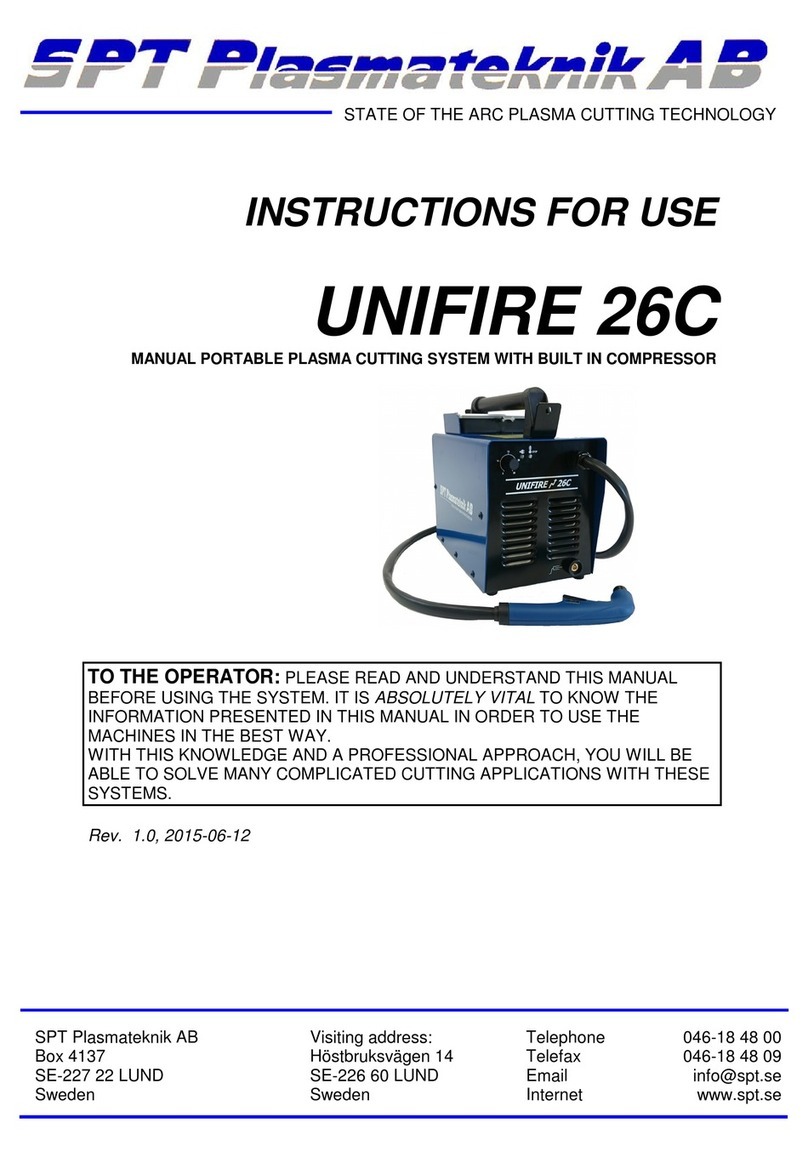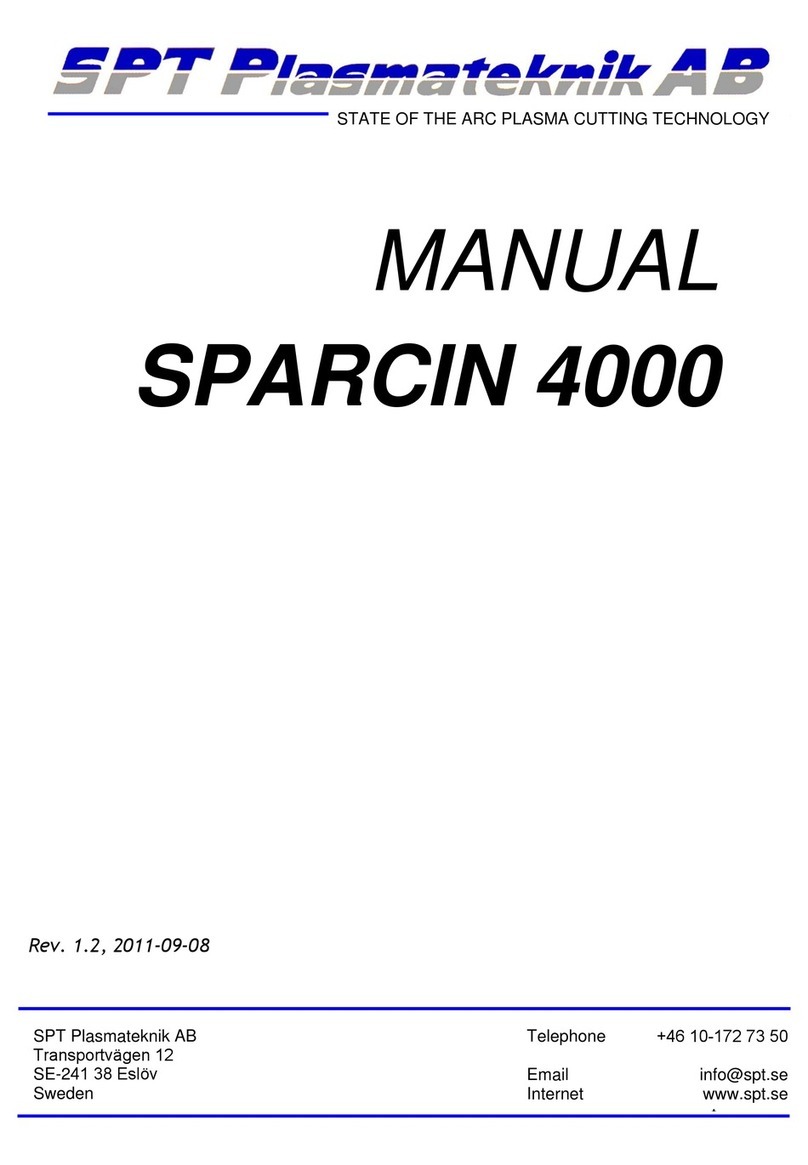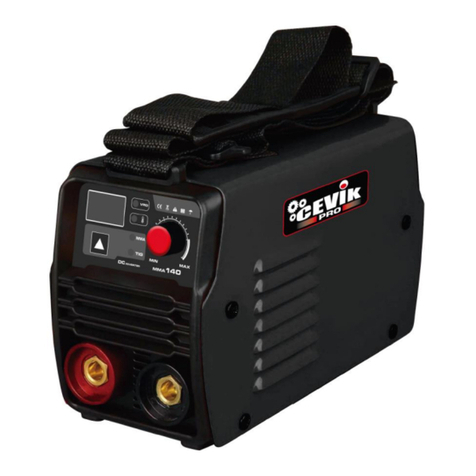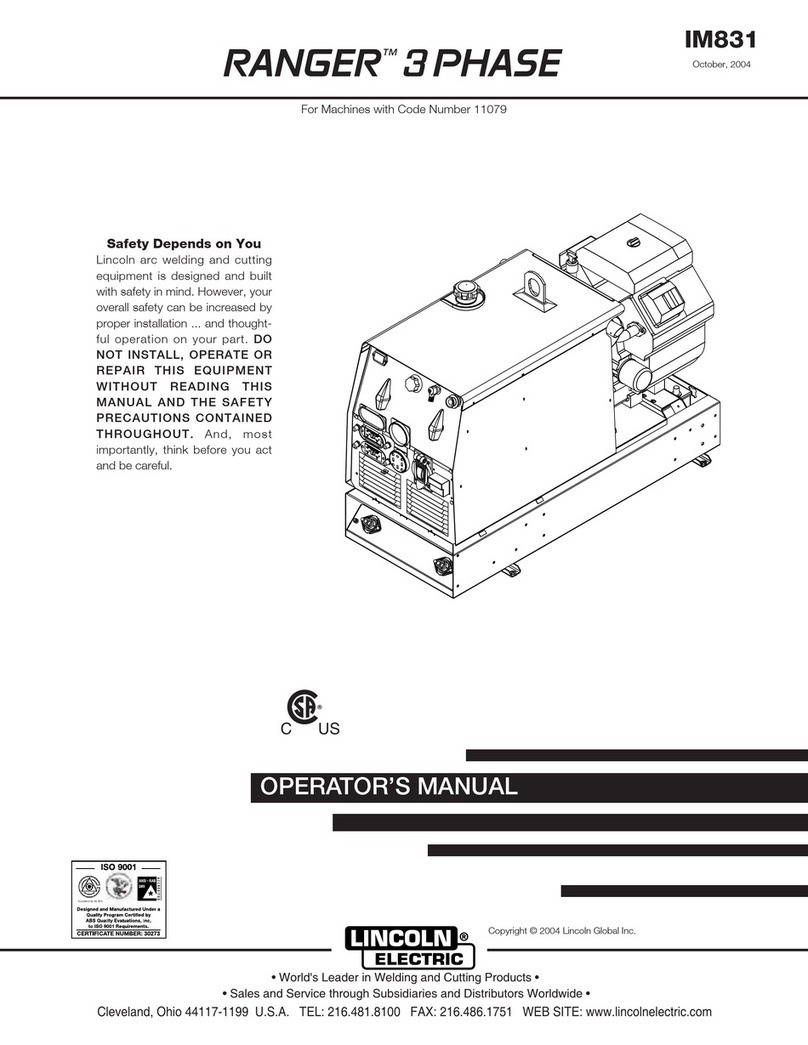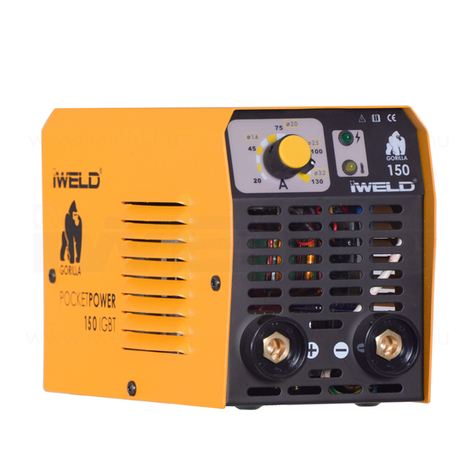SPT SPARCIN 9 User manual

INSTRUCTIONS FOR USE
SPARCIN 9
SPARCIN 9C
TO THE OPERATOR: PLEASE READ AND UNDERSTAND THIS MANUAL
BEFORE USING THE SPARCIN 9/9C. IT IS ABSOLUTELY VITAL TO KNOW THE
INFORMATION PRESENTED IN THIS MANUAL IN ORDER TO USE THE
SPARCIN 9/9C IN THE BEST WAY.
WITH THIS KNOWLEDGE AND A PROFESSIONAL APPROACH, YOU WILL BE
ABLE TO SOLVE MANY COMPLICATED CUTTING APPLICATIONS WITH THE
SPARCIN 9/9C.
Rev. 3.2. 2017-07-19
STATE OF THE ARC PLASMA CUTTING TECHNOLOGY
SPT Plasmateknik AB
Visiting address:
Telephone
046-18 48 00
Box 4137
Höstbruksvägen 14
Telefax
046-18 48 09
SE-227 22 LUND
SE-226 60 LUND
Email
Sweden
Sweden
Internet
www.spt.se

SPARCIN 9 / SPARCIN 9C
2
CONTENTS
Page
1. TECHNICAL DATA 3
2. INSTALLATION 4
3. OPERATING INSTRUCTIONS 5
4. GENERAL INFORMATION ON PLASMA CUTTING 7
5. ACCESSORIES FOR MANUAL CUTTING 11
6. CHANGING CONSUMABLES 12
7. MAINTENANCE 13
8. TROUBLE SHOOTING 14
9. PERSONAL PROTECTION 15
10. WARRANTY 16
11. SPARE PARTS LIST 18
12. TORCH/TORCH PARTS LISTS 19
13. WIRING DIAGRAM - POWER SOURCE 31

SPARCIN 9 / SPARCIN 9C
3
1. TECHNICAL DATA
Power supply: 3~50Hz, 400V (standard)
3~50Hz, 415V on request
Main fuse: 16A slow blow
Process power: 120V, 20-80A
Duty cycle: 60%
Maximum power: 12 kVA
Power factor: 0,95
Open circuit voltage: 200V
Gas pre-flow: 1 sec
Gas post-flow: 5 sec
Dimensions: SPARCIN 9 SPARCIN 9C
Length 550mm 550mm
Width 300mm 300mm
Height 310mm 460mm
Weight: 22kg 28kg

SPARCIN 9 / SPARCIN 9C
4
2. INSTALLATION
SPARCIN 9 is ready for use after connection to electric power and compressed air or some
technical gas for plasma cutting.
SPARCIN 9C (with built-in compressor) is ready for use after connection to electric power.
Power supply:
3~50Hz, 400V
Fuse: 16A slow blow
Important!
If the machine is to be connected to a power generator it is absolutely vital that the machine be
fitted with generator filter. If the machine is not fitted with generator filter, serious damage to
the machine and costly repair can be the result. Such damage is NOT covered by the warranty.
The generator must supply minimum 15 kVA exclusively for the SPARCIN 9/9C.
Gas supply ( SPARCIN 9 only )
Air plasma cutting:
Connect the compressed air to the filter regulator and adjust to 3,5-4 bar.
Gas plasma cutting;
Connect the constant flow regulator of the gas cylinder to the filter regulator and
adjust to 3,5-4 bar.
The gas flow should be approx. 18 l/min.
IMPORTANT! The quantity of plasma generating air/gas flowing is decided by a gas
injector situated in the connection between the gas hose and the torch body, and this is
unique for SPARCIN 9. PLEASE NOTE, the torch for SPARCIN 9C has a unique gas
injector.
The use of incorrect hose assembly may result indamage to the torch body as well as the
power source.

SPARCIN 9 / SPARCIN 9C
5
3. OPERATING INSTRUCTIONS
Check that the machine has been properly connected to the power supply and gas, see
chapter 2, installation.
NOTE! The machine may only be used with 400V power supply!
Connect the earth-lead to the front of the machine. Connect the earth clamp directly to the
work piece. If necessary, clean the surface from paint, rust, dirt, etc.
Cutting
Place the POWER switch in position ON.
The power lamp READY will light.
The pump, fan (and built-in compressor) will start.
Choose process power (cutting current 20-80A)
Place the torch in position for contact cutting or distance cutting and press the START button
on the torch handle.
Contact cutting
Slide the nozzle against the work piece.
As an accessory, there are special contact cutting nozzles, part no. 199 108, made for
profile cutting.
Contact cutting is suitable for cutting up to 4 mm plate thickness.
Distance cutting
Keep a distance of a few millimetres between the nozzle and the work piece.
The accessories for distance cutting are the distance cutting guide, part no.
199107/199124, the distance roller, part no. 299028/299030 and the circle cutting
bar, part no. 299079/299082.
After activating cutting start the air/gas will flow for a short while before the plasma arc (pilot
arc) strikes. If the cutting process does not start, the pilot arc will go out. Then make another
try.
To stop the cutting process, release the START button on the torch handle. The plasma arc
will go out instantaneously. Gas/air will flow for a few more seconds.
PLEASE NOTE! When the machine is not in use or is only used at long intervals, please
switch off the machine. It contains mechanical components like fan, pump, (and built-in
compressor), which should not be exposed to unnecessary wear.

6
SPARCIN 9 / SPARCIN 9C
Air plasma cutting
Use the electrode for airas plasma generating gas.
Gas plasma cutting
Use the electrode for technical gas; nitrogen (N2), argon/hydrogen mix (Ar/H2) or
nitrogen/hydrogen mix (N2/H2)
Use the nozzle marked 0,9, part no. 199060 for cutting plate thickness up to 6 mm, for thicker
plates, use the nozzle marked 1,1, part no. 199001.
PLEASE NOTE! The plasma cutting torch is a component designed for high power
outputs. Please handle the torch body and hose assembly with care.
With the proper handling, by an operator with the proper knowledge, the lifetime of the
cutting torch will be very long, and the low wear on nozzles and electrodes will give good
cutting economy. A damaged hose assembly, e.g. with air or water leakage, will infallibly
damage the torch body.
NEVER USE A DAMAGED PLASMA CUTTING TORCH!

7
SPARCIN 9 / SPARCIN 9C
4. GENERAL INFORMATION ON PLASMA CUTTING
With exception of the systems that have built-in compressors (SPARCIN 9C), all SPT
Plasmateknik ABmanufactured plasma cutting systems with water cooled torch have full
multi-gas capability.
When using technical gases, a pressure regulator as opposed to a flow regulator must be fitted
to the gas cylinder. The use of flow regulators may lead to ignition problems and torch
malfunction.
This chapter also describes in general how to optimise cutting quality and consumable
lifetime.
When touse technical gas
Mild steel
Mild steel is cut with good quality using air asplasma generating gas. Insome applications
however, when better cut quality is desired, pure oxygen can be used as plasma generating
gas.
When cutting with oxygen theconsumable lifetime is shorter than with air.
Stainless steel
Most types ofstainless steel are cut with good result with air asplasma generating gas. The
weldability of the kerf however may be improved by using a technical gas.
Using pure nitrogen as plasma generating gas you can reduce the amount of chrome-oxide in
the kerf. When cutting with nitrogen, the gas electrode as well as the air electrode may be
used.
To further improve the kerf quality, a mixture of 10% hydrogen in nitrogen (NH10) may be
used. Since this mixture contains hydrogen a tendency to develop dross may occur. This can
be minimised if not eliminated byvery precisely adjusting cutting parameters asspeed,
distance, gas flow, nozzle size, process power etc. When cutting with NH10 the gas electrode
as well as the air electrode may be used.
Aluminium
There are a great number ofdifferent aluminium alloys available. Most ofthem are cut
without dross and with high speed using air as plasma generating gas. The aluminium-oxide in
the kerf may reduce the weldability ofthe cut.
To reduce the aluminium-oxide a gas mixture of 10% hydrogen in nitrogen (NH10) may be
used. When cutting with NH10 the gas electrode as well as the air electrode may be used. To
further reduce the aluminium oxide a mixture of 35% hydrogen in argon (AH35) may be used.
When cutting with AH35 the gas electrode must be used.
Note that when cutting with AH35 it may be necessary to use a nozzle with a bigger orifice to
prevent double arcing.

SPARCIN 9 / SPARCIN 9C
8
Copper/brass
Copper and brass can depending on alloy be cut with air, nitrogen or a mixture of 10%
hydrogen in nitrogen (NH10). When cutting with air, air electrode must be used. When cutting
with nitrogen or NH10 air electrode as well as gas electrode may be used.
Titanium
Titanium is best cut with a mix of 70% helium in argon. When using this mixture, gas
electrode must be used. Some titanium alloys are better cut with air or oxygen.
Piercing
Piercing is not recommended above 15 mm material thickness at >80A and 12 mm at <80A.
When firing the pilot arc the nozzle must be protected from molten metal spattering back by
keeping an adequate distance to the work piece. The piercing standoff distance must be at
least double the cutting distance.
The piercing capacity is highly material dependant.
How to improve cutting quality
To reach the best possible results the first step is to assure that the plasma cutting system is
properly installed an adjusted.
The cut quality is primarily determined from angle deviation, dross formation and the surface
of the kerf.
Angle deviation
The angle deviation is either positive or negative. A positive angle deviation (V-shaped)
occurs as a result of more material being removed in the upper part than the lower part of the
cut. A negative angle deviation occurs as a result of the reversed conditions.
Problems with angle deviation consists either of the cut having too much angle deviation or
inconsistent angle deviation, i.e. positive on one side, negative on the other.
Too much angle deviation
•Incorrect distance between nozzle and work piece. Adjust the distance.
Too much distance > positive angle deviation
To little distance > negative angle deviation
•Worn or damaged consumables. Check the parts and change if necessary.
•Wrong cutting direction. The left side of the cut seen from the cutting direction of the
torch has less angle deviation than the opposite side. Check the direction and change if
necessary.

SPARCIN 9 / SPARCIN 9C
9
•Too high cutting speed. By slowing the cutting speed the angle deviation can be
minimised.
Inconsistent angle deviation
•Worn or damaged consumables. Check the consumables and change if necessary.
•The torch is not fitted straight in relation to the work piece. Check the torch position
and adjust if necessary.
•Magnetic remanence in the work piece. Parts that are handled with electro-magnetic
lift tools may become magnetic. Make sure that the material is handled without using
magnetic lift tools.
Dross formation
Dross free cutting requires that all parameters for each job are optimised.
Dross formation as a result of too low cutting speed
•This type of dross formation occurs when the cutting speed is too low. The dross is
extensive and porous. It is easy to remove. Reduce the dross formation by increasing
cutting speed.
Dross formation as a result of too high cutting speed
•This type of dross formation occurs when the cutting speed is too high. The dross
looks like drops of molten metal and is hard to remove.
By lowering the cutting speed the dross formation can be reduced. If reducing the
speed does not solve the problem it may help to lower the distance between nozzle and
work piece.
Sporadic dross formation
•Worn or damaged consumables. Check and change if necessary.
•This type of dross formation may be material dependant. Some materials cause more
dross than others.
•Work piece temperature. When cutting the first parts from a work piece the dross
formation can be lass than when the material has become heated.
The surface of the kerf
The kerf may be convex or concave. An accurate adjustment of the cutting speed and distance
can help in obtaining a straight cut.
Concave kerf
•Too little distance between nozzle and work piece. Increase the distance in order to
straighten the kerf.

SPARCIN 9 / SPARCIN 9C
10
Convex kerf
•Too much distance between nozzle and work piece, or too high cutting current. By
first lowering the torch and then if necessary lowering the current the kerf can be
straightened.
Some combinations of plasma generating gas and material can more than others cause
convex kerfs.
Optimising consumable lifetime
The consumable parts of the water cooled torch guarantee the best possible consumable
lifetime and optimum cutting economy. Tooptimise theconsumable lifetime thefollowing
instructions must be followed.
Optimising electrode lifetime
•When piercing the torch must not be too close to the work piece
•Program the sequence so that the plasma arc goes out before the torch goes over the
edge of the work piece. If the pilot arc re-ignites the electrode lifetime is reduced.
•The electrode lifetime can be increased by programming the sequence so that several
parts are cut in one sequence, thereby reducing the number of starts.
•When changing plasma generating gas the gas system must be flushed.
Optimising nozzle lifetime
•When piercing, the torch must not be too close to the work piece. The piercing
distance should be at least double the cutting distance.
•The distance between nozzle and work piece must be kept constant so that the nozzle
does not touch the work piece.

11
SPARCIN 9 /SPARCIN 9C
5. ACCESSORIES FOR MANUAL PLASMA CUTTING
There are a number of accessories available for SPARCIN and SPARCON cutting systems
equipped with hand torch.
Plasma gouging
All SPARCIN and SPARCON systems, except SPARCIN 5/, have gouging capability. By
fitting the torch with nozzle extension, gouging nozzle (2,2 mm for <80 A, 3,0 mm for >80A),
and protective cup for gouging (see torch parts lists) a powerful tool for gouging is obtained.
20 mm nozzle extension set
As an accessory there is a set of20 mm nozzle extension, extended electrode and extended
protective cup. This is useful for cutting in narrow places, corners, etc.
Contact cutting nozzle
By dragging the nozzle directly against the work piece a good cut quality can be obtained in
material thickness up to4 mm. Note that contact cutting is only allowed with cutting current
up to 40 A.
Cutting wagon
For both SPARCUT XL (art. No. 299028) and DURACUT (art. No. 299030) there isa four-
wheel cutting wagon available.
Circle cutting attachment
A circle attachment for DURACUT (art. No. 299079) and SPARCUT XL (art. No. 299082)
for cutting radius between ca. 100 and 450 mm.
Distance cutting guide
For all hand torches there are two different types of distance cutting guides, art. No. 199107
and 199124. See the torch parts lists for more information.

SPARCIN 9 / SPARCIN 9C
12
6. CHANGING CONSUMABLES
WARNING! THE MACHINE MUST ALWAYS BE SWITCHED OFF WHEN
CHANGING CONSUMABLES!
1. After removing the protective cup, loosen the nozzle with the nozzle tool. All the
consumables can now be removed.
2. Please observe carefully the correct assembly of the consumables.
3. Tighten the nozzle with the nozzle tool.
4. Tighten the protective cup.
Electrode insulator
Protective cup
Electrode
Nozzle
Torch body

SPARCIN 9 / SPARCIN 9C
13
7. MAINTENANCE
Daily
Inspect and, if necessary, change nozzle, electrode and electrode insulator.
Empty and, if necessary, clean the moisture trap situated on the rear of the machine. This is
easily done by pressing the bottom sealing of the glass cover while compressed air is
connected, or completely unscrewing the cover and cleaning it from dirt. Disconnect
compressed air or gas before unscrewing the glass cover.
Carefully inspect the torch body and the hose assembly with regard to any damage or leakage
of air, gas or water, mechanical damage or other.
NEVER USE A TORCH WITH A DAMAGED TORCH BODY OR HOSE ASSEMBLY!
Every six months
Remove the plates from the machine. Inspect cable connections. Blow away dust and dirt with
compressed air.
Check coolant level, if necessary, fill up with distilled or de-ionised water.
Coolant conductivity: <5µS/cm.
Fill up with anti freezing agent when necessary. When the machines leaves the factory the
coolant consists of 70% de-ionised water and 30% pure mono-ethylene-glycol.
NOTE! The anti freezing agent must be pure glycol!

SPARCIN 9 / SPARCIN 9C
14
8. TROUBLE SHOOTING
Thermal overload
If the pump, fan (and compressor) are working but the green READY lamp is not lit, the
thermal overload protection is active.
Let the machine cool down while switched on until the lamp lights. Now the machine is in
working order.
Malfunction
If the pilot arc does not strike:
•check and, if necessary, change nozzle, electrode and electrode insulator.
•check and, if necessary, adjust inlet air/gas pressure to 3,5-4 bar.
•If possible, check air/gas flow, approx. 18 l/min. Too high air/gas flow will
prevent the pilot arc from striking.
If the pilot arc is not stable:
•too high air/gas flow, adjust inlet pressure to 3,5-4 bar.
•the machine is working two-phase, check mains fuses.
Inferior performance or cutting quality:
•check inlet air/gas pressure, 3,5-4 bar.
•inspect torch body and hose assembly for damage and leaks.
•check nozzle, electrode and electrode insulator.
•check earth lead connection. If necessary, clean it from dirt, paint and oxide.

SPARCIN 9 / SPARCIN 9C
15
9. PERSONAL PROTECTION
Plasma cutting is, if correctly used, a safe, efficient and economically attractive method for
cutting metals. However, like most industrial processes, it involves some risk factors. But they
can be reduced - provided you are aware of them.
Plasma cutting produces noise, ultra violet radiation and fumes. For the safety of the workers
some special measures should be taken.
To prevent burns:
The ultra violet (UV) radiation from the plasma arc may damage the eyes and the skin. The
intensity of the radiation increases considerably near the arc. The operator and other persons
near the work place should use some appropriate protection. The naked skin must be protected
by wearing working clothes and protective gloves. The eyes and face must be covered by an
appropriate shield with glasses to protect from UV radiation.
Noise:
Plasma cutting may produce some heavy noise. Always use good ear protection.
Fumes:
The operator and people near the work place should avoid as much as possible being exposed
to the gases and smoke that might arise from the plasma cutting.
Provide for good ventilation combined with a suitable respiration protection and a correctly
applied local exhaust system.
Remember that metals that are covered with or contain large quantities of lead, cadmium,
zinc, chrome, nickel, mercury and beryllium may produce hazardous quantities of poisonous
substances.

10. SPT Plasmateknik AB grants a 24 month warranty for its products.
Validity
The warranty applies to power sources manufactured by SPT Plasmateknik AB
(SPT). The warranty period is 24 months from date of delivery to end user, but not
more than 30 months from delivery from factory. Ifthe product isused more than
normal 1-shift work, the warranty period is shortened accordingly.
Any warranty claim should be accompanied by proof ofpurchase.
Coverage
SPT will take responsibility to repair a machine to the state it was in before the fault
occurred.
The warranty covers spare parts and reimbursement for work carried out by an
authorised service point. Labor costs are limited to a fixed rate for each action carried
out.
Upon replacement ofparts, SPT reserves the right to invoice parts. The invoices will
be credited upon the return of faulty parts to SPT.
When a warranty claim occurs, the customer should immediately turn to an
authorised service point, or SPT directly. SPT requires detailed information about the
conditions under which the machine was in use when the fault occurred, such as
location (indoor/outdoor), ambient temperature, power supply (generator/normal
power supply – if generator, information is needed about the rating and type of
generator).
When a machine is taken in for warranty repair itisrequired that the torch also is
brought in with the consumables mounted that were there when the fault occurred.
The serial number must be clearly visible.
The user isresponsible for limiting the damage by immediately stopping using the
machine if a problem issuspected.
Warranty repair may only be carried out by authorised service points. SPT reserves
the right todeny warranty claims where work has been carried out by non-authorised
service personnel.
Should SPT find that the product has been used inappropriately and it islikely that
such inappropriate use may continue, SPT reserves the right to refuse warranty
repair and refund the customer, with a deduction for the use the customer has had of
the product. SPT also reserves the right torestore the product toworking order on
the customer’s expense.
Limitations
The following isnot covered by warranty:
Defects caused by natural wear.
Defects caused by non-compliance of use and maintenance recommendations.
Improper gas pressure settings.
Improper electrical power supply.
Overload.
Damage caused by transport, handling and improper storage.
Fire
Damage caused by natural causes such as lightning, flooding etc.
16

Further, the warranty does not cover:
Fault finding, direct or indirect travel costs, transport costs, travel costs, allowances,
accommodation and such.
NOTE! The warranty does not cover the torch and its consumable parts.
SPT bears no responsibility whatsoever for consequential damages caused by fault
in its products, such as, but not limited to, loss of revenue, damages to 3rd party,
production delays, penalties etc.
Warranty is not valid if modifications of any kind has been made to the product,
without the written approval from SPT. Repairs made by non-authorised service
personnel renders the warranty void.
A modified product will be restored to the original state at the expense of the
customer prior to any repair, as SPT can not be responsible for the function of its
products otherwise.
The remaining warranty period / spare parts guarantee
Following the guarantee repair, the warranty period for the repaired or replacement
product will be valid until the end of the original warranty period. Exception: Replaced
parts have a warranty period of 6 months, even if the remaining warranty period
would be shorter. The warranty period of six 6 months also applies to repair outside
guarantee.
Parts warranty covers only replacement parts.
Disputes
Disputes will be handled according to the general terms in Orgalime S 2012.
17

SPARCIN 9 / SPARCIN 9C
18
11. SPARE PARTS LIST
341012 SPARCIN 9 power source
341013 SPARCIN 9C power source with built in compressor
399009 SPARCUT 6m, plasma cutting torch/Sparcin 9
399045 SPARCUT 6m, plasma cutting torch/Sparcin 9C
221012 Switching PCB 80A
221013 PWM PCB 80A
221007 Ignition PCB
221011 Rectifying PCB 80A
100015 Rectifier bridge DB35-12
110001 Capacitor 0,1µF
127002 Potentiometer CURRENT
141008 Main power switch
150001 READY lamp
154017 Fan
154012 Coolant fan
262020 Water pump
191021 Manometer
235005 Control trafo SPARCIN
236006 Pulse transformer

SPARCIN 9 / SPARCIN 9C
19
12. TORCH/TORCH PARTS LISTS
SPARCUT XL
LIQUID COOLED MANUAL TORCH
11.
6c.
5.
4.
3b.14.
13.
4.
6a.
7a. 5. 7b.
3a.
1a.
8.
12.
10.
9.
19a. 20.
22. 23.
24.
21.
16. 17a.

SPARCIN 9 / SPARCIN 9C
20
SPARCUT XL/M
LIQUID COOLED MACHINE TORCH
11. 22.
24.
10.
9.
1b.
17b.
21.
6a.
3a.
4.
5.
13.
12.
14.
30.
19b.
This manual suits for next models
1
Table of contents
Other SPT Welding System manuals
Popular Welding System manuals by other brands
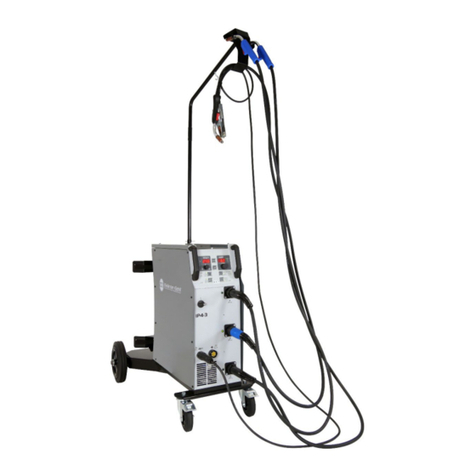
WIELANDER+SCHILL
WIELANDER+SCHILL InvertaPuls IP4-3 Operation manual
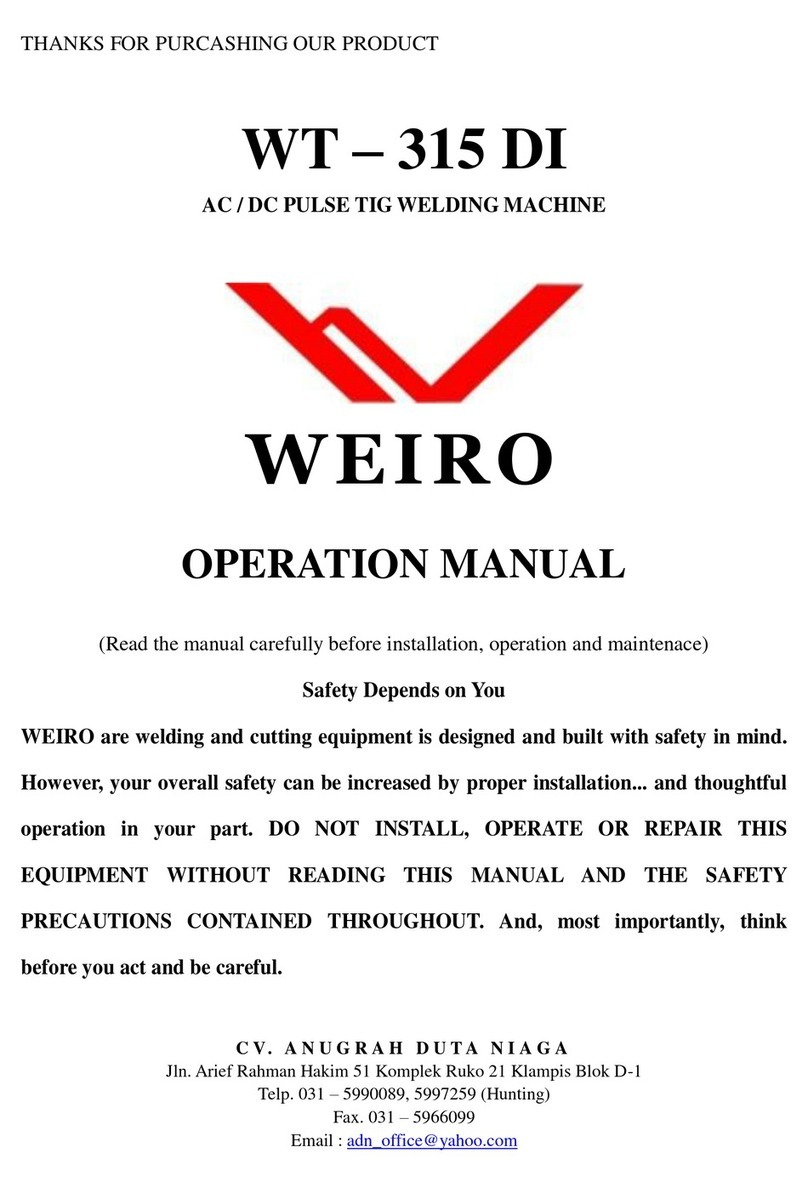
Weiro
Weiro WT - 315 DI Operation manual
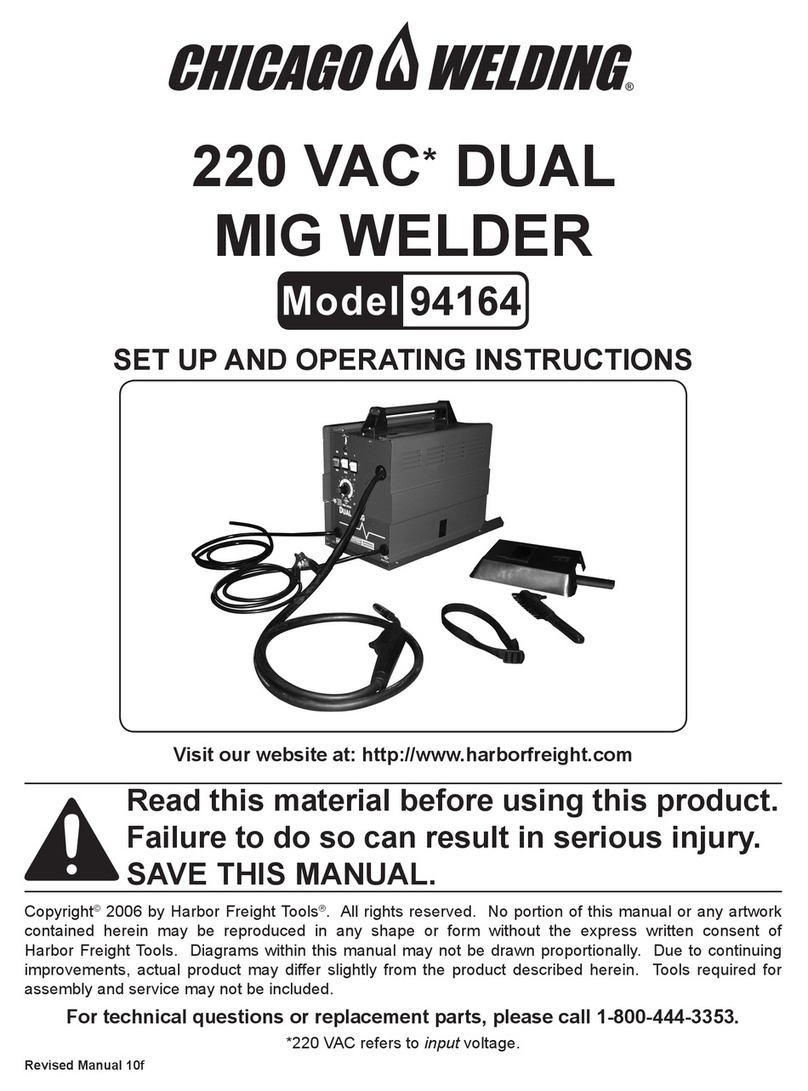
Chicago Welding
Chicago Welding 94164 Set up and operating instructions
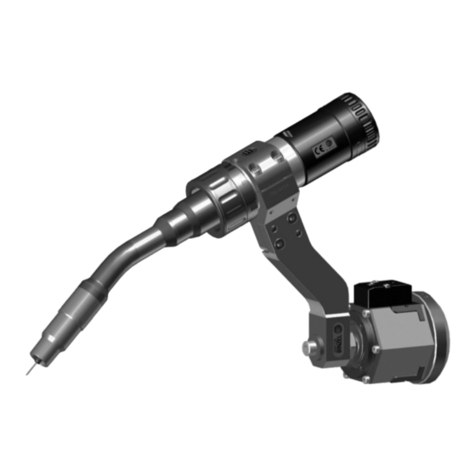
Abicor Binzel
Abicor Binzel ABIROB W operating instructions
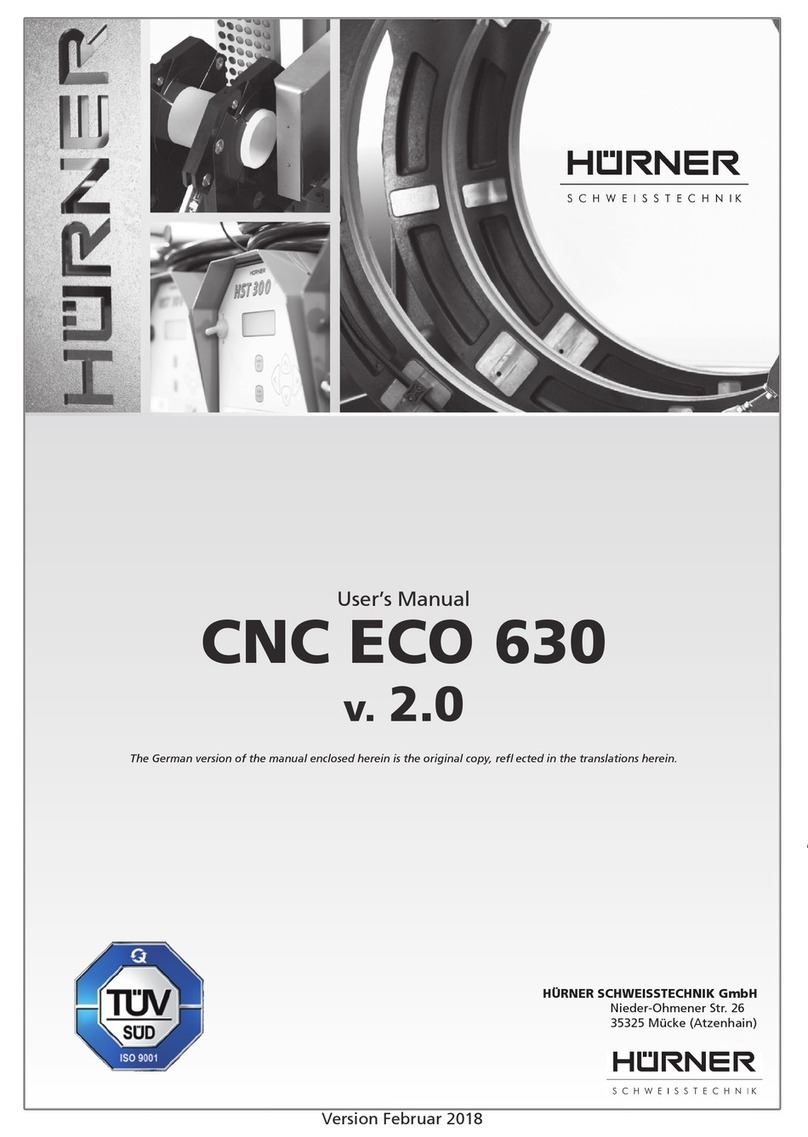
HURNER
HURNER CNC ECO 630 user manual
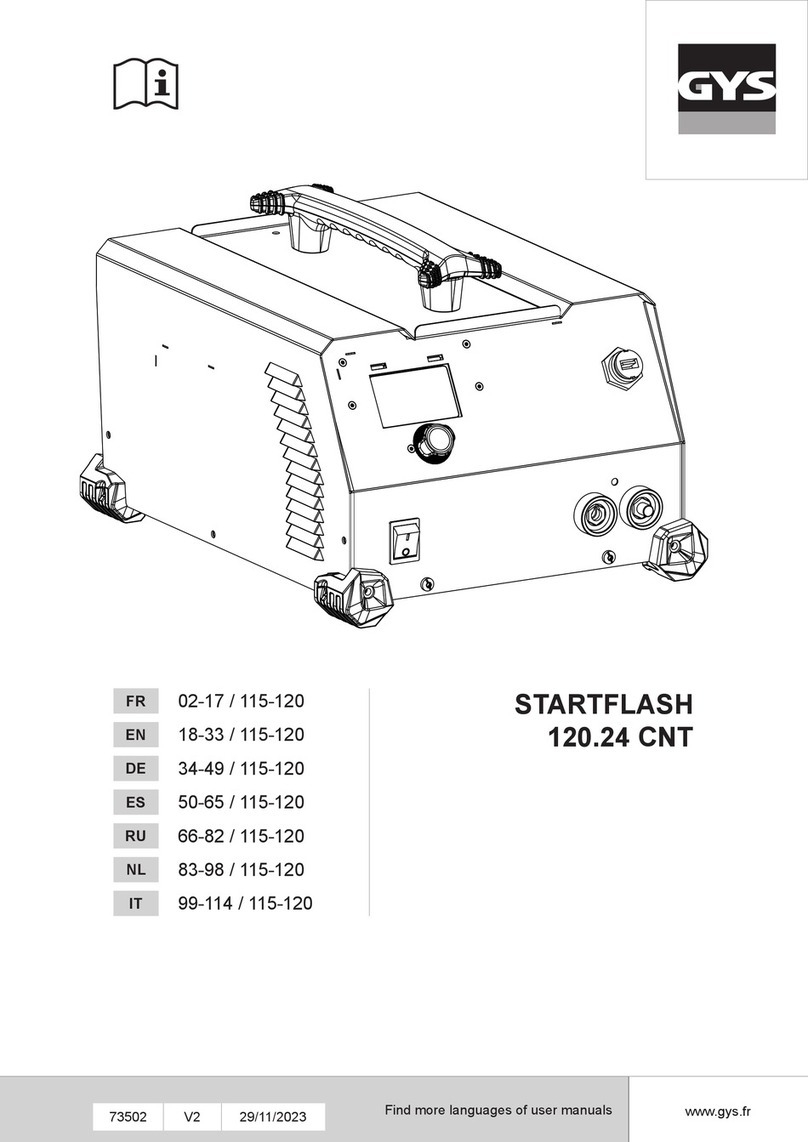
GYS
GYS STARTFLASH 120.24 CNT operating manual
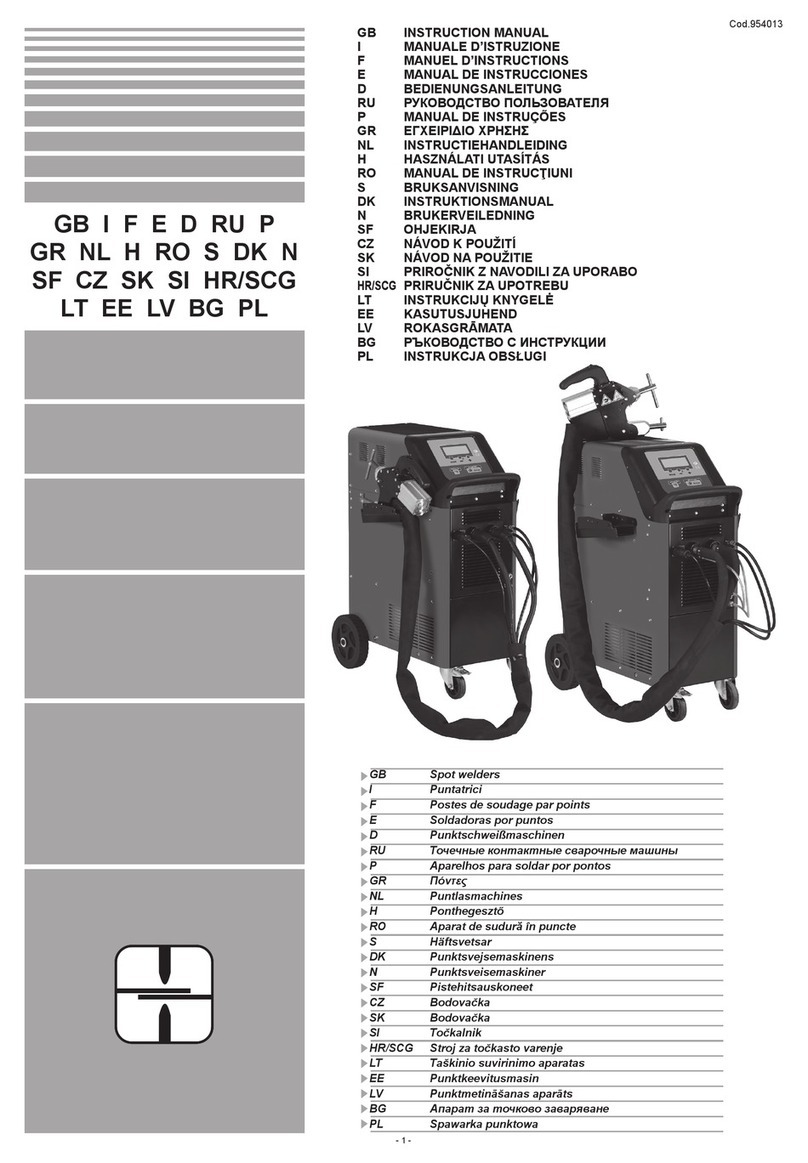
Suministros Orozco
Suministros Orozco Telwin digital spotter 9000 instruction manual
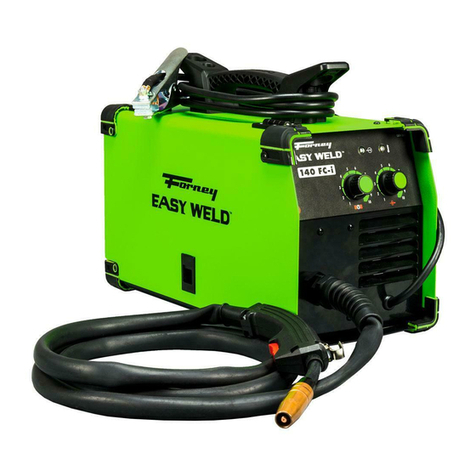
Forney
Forney Easy Weld 261 quick start guide
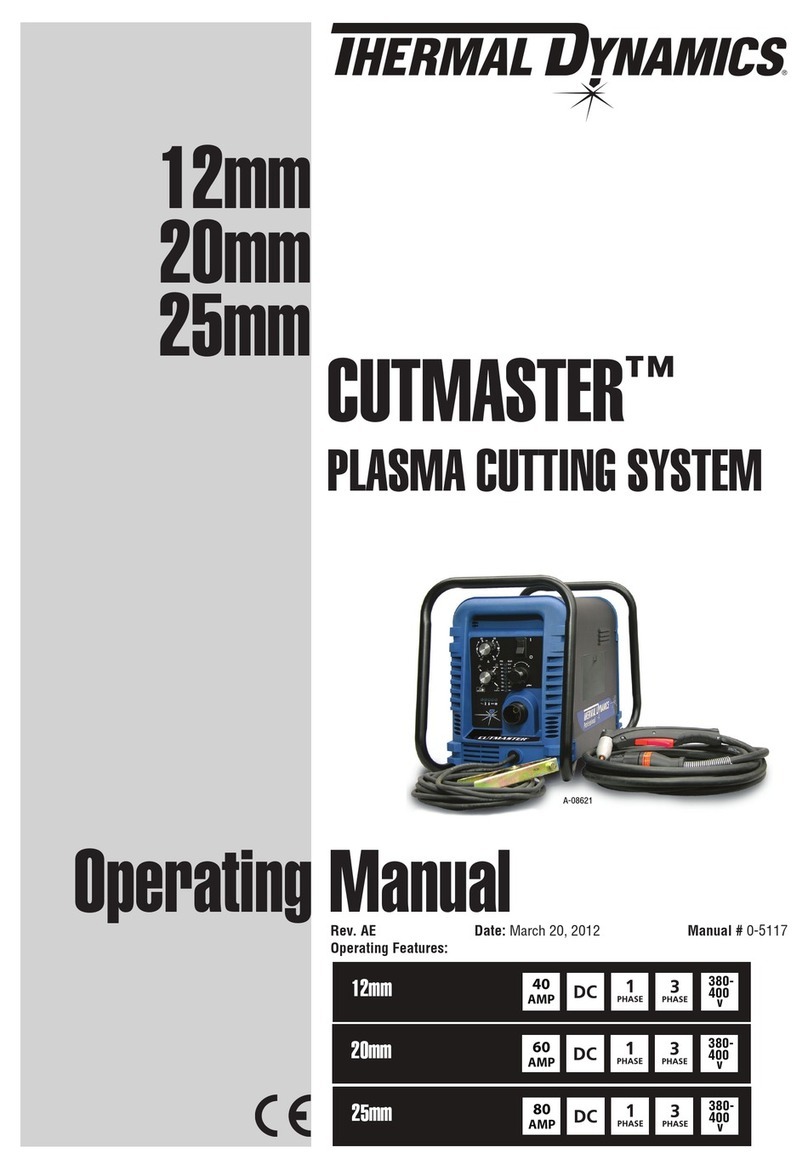
Thermal Dynamics
Thermal Dynamics CUTMASTER operating manual
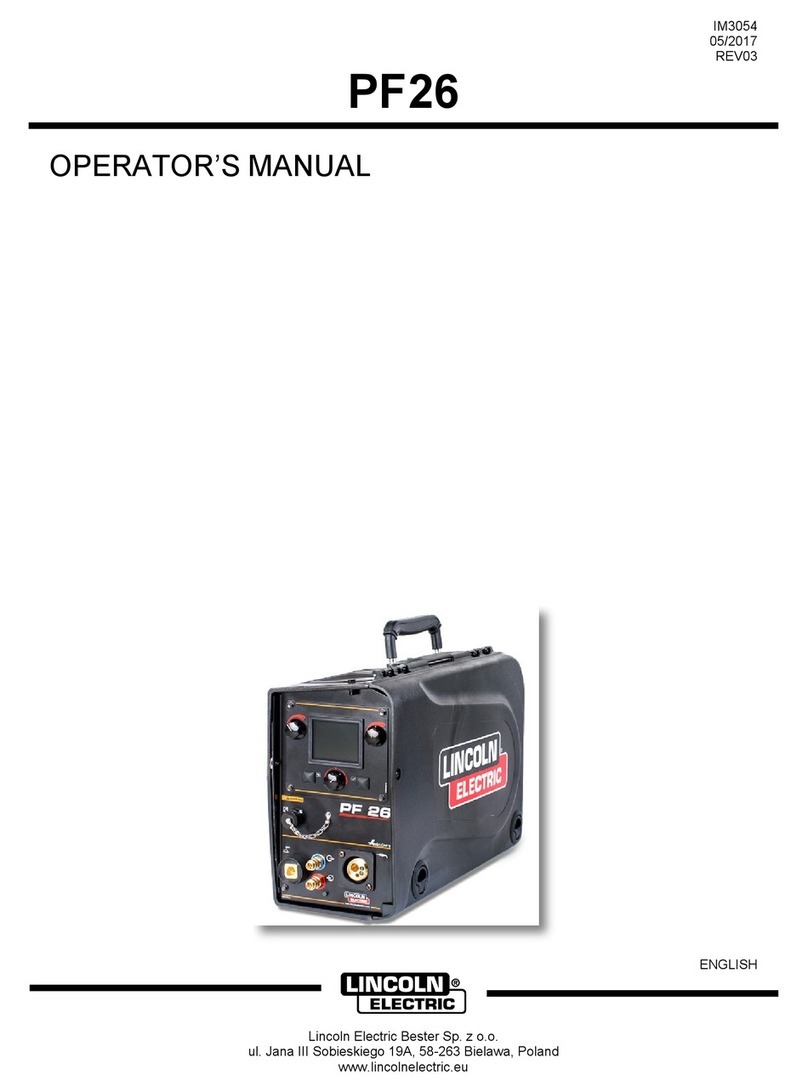
Lincoln Electric
Lincoln Electric PF26 Operator's manual

Kemppi
Kemppi fastmig kms 400 mvu operating instructions
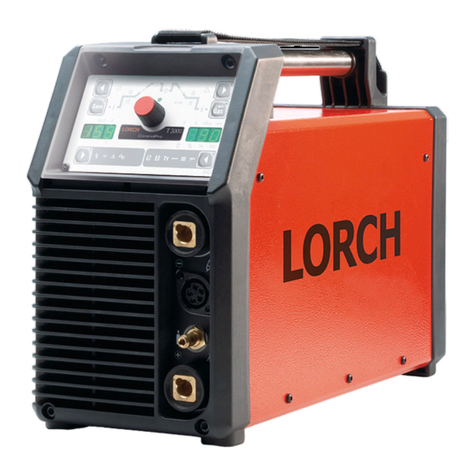
LORCH
LORCH T BasicPlus Series Operation manual
